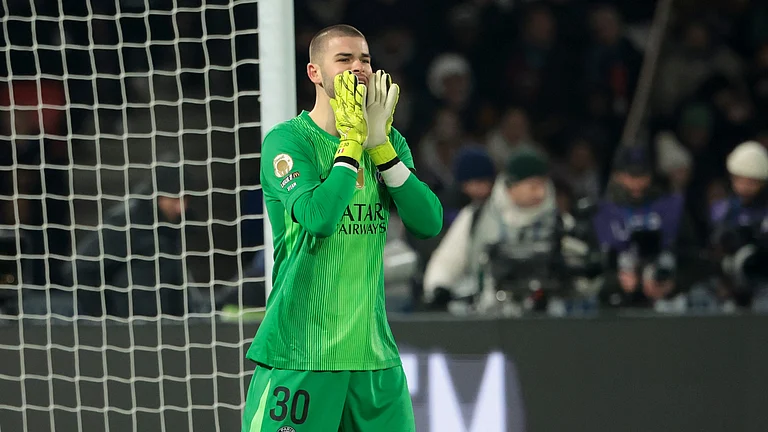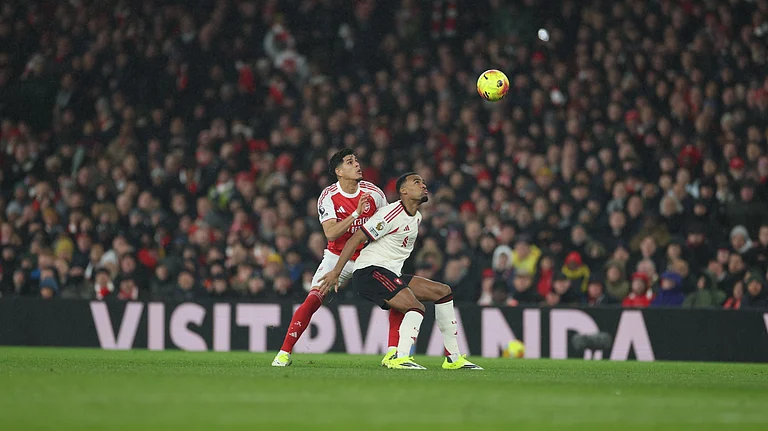Jama Masjid authorities along with engineering and heritage experts are currently chalking out a plan to remove the dangling part of the finial of the main dome of the 17th-century grand mosque in Delhi which was damaged in a fierce thunderstorm recently. Jama Masjid Shahi Imam Syed Ahmed Bukhari on Thursday also said as part of the plan, aerial photographs of the mosque, with closer shots of the main dome have also been taken to aid the experts.
"The dangling part is posing a threat to the wall and minarets near it, and to people on the ground too as there is a risk that if it rolls off the dome, it may hit the wall, and pieces of the stone may fall on the ground. So, we are chalking out a plan to first safely bring down the dangling part of the damaged finial," Bukhari told PTI. On Tuesday, a day after the storm had hit Delhi, he had written to ASI requesting the removal of the dangling part of the crown and repair of the ornamental structure that has topped the grand mosque since its construction.
"We have not received any response from ASI on our request, so we are planning on our own. Jama Masjid office, the Delhi Waqf Board, a structural engineering expert, and experts from INTACH are working together to come up with a feasible plan to rescue the dangling portion of the finial," the Shahi Imam added. On Tuesday, Delhi Waqf Board Chairman Amanatullah Khan and a team of experts from INTACH had visited Jama Masjid located in the heart of the Walled City, and inspected the damage caused to the finial. Khan had also gone up on the terrace to see the damaged parts lying there, accompanied by other officials.
Bukhari said, "Together, we are brainstorming the possible ways to bring down that heavy part. A Delhi-based scientist is helping us, and one solution that we have thought of is to bring a tall crane and move it from a street on the Chawri Bazaar side, and pull it up and bring the hanging part down with a harness attached". However, it is still under planning, and it is not exactly known how effective this step might be. A senior official of INTACH said, "This is an emergency scenario, and we as a heritage institution have decided to help in this process, for the safety of the people and the monument.
"Our team had recently visited the Jama Masjid premises after the storm. Even a couple of months ago, a team from INTACH had visited as Jama Masjid authorities have been contemplating a conservation project," the official told PTI. When asked if the finial, which is as old as the mosque, can be repaired, the INTACH official said, yes, it is repair-worthy. "It is also a piece of heritage, and it has just broken which needs to be fixed and the ensemble reinstalled. A preliminary study suggests the material of the finial is copper, with gold plating on the surface. Some portions have faded but it can be refurbished to return its shine," the official said, adding only metallurgical examination can tell the exact composition.
At Shahi Imam's Office, a smaller piece of the huge finial is kept in store while two large pieces are lying on the terrace below the dome. "The part which is still hanging from the main dome would weigh around 350 kg, and the entire ensemble weight would have been about 500 kg. So, it is essential to remove that portion from the dome," Bukhari had earlier said. An architectural jewel and a very popular tourist attraction, Jama Masjid is a 17th-century monument, originally named Masjid-e-Jahanuma, built by Mughal Emperor Shahjahan. He himself had laid the foundation of stone on the strong basements of a hillock on October 6, 1650, which was a Friday. The grand mosque was completed in 1656, according to information shared by the Shahi Imam's Office, on its history.
Bukhari had described the rampaging storm as something he had "never seen" in his entire life. "Scared people ran to shelter themselves from the stormy weather, women and children lay huddled in the cloisters, crying. It was a horrible sight on the mosque premises. "The wind was swirling and howling. Two or three people also got injured at Jama Masjid as stone parts fell off from minarets and other parts of the mosque. But, it was a nature's miracle ('Kudrat ka Karishma) that most people came out of it safely here," he had earlier said.


























